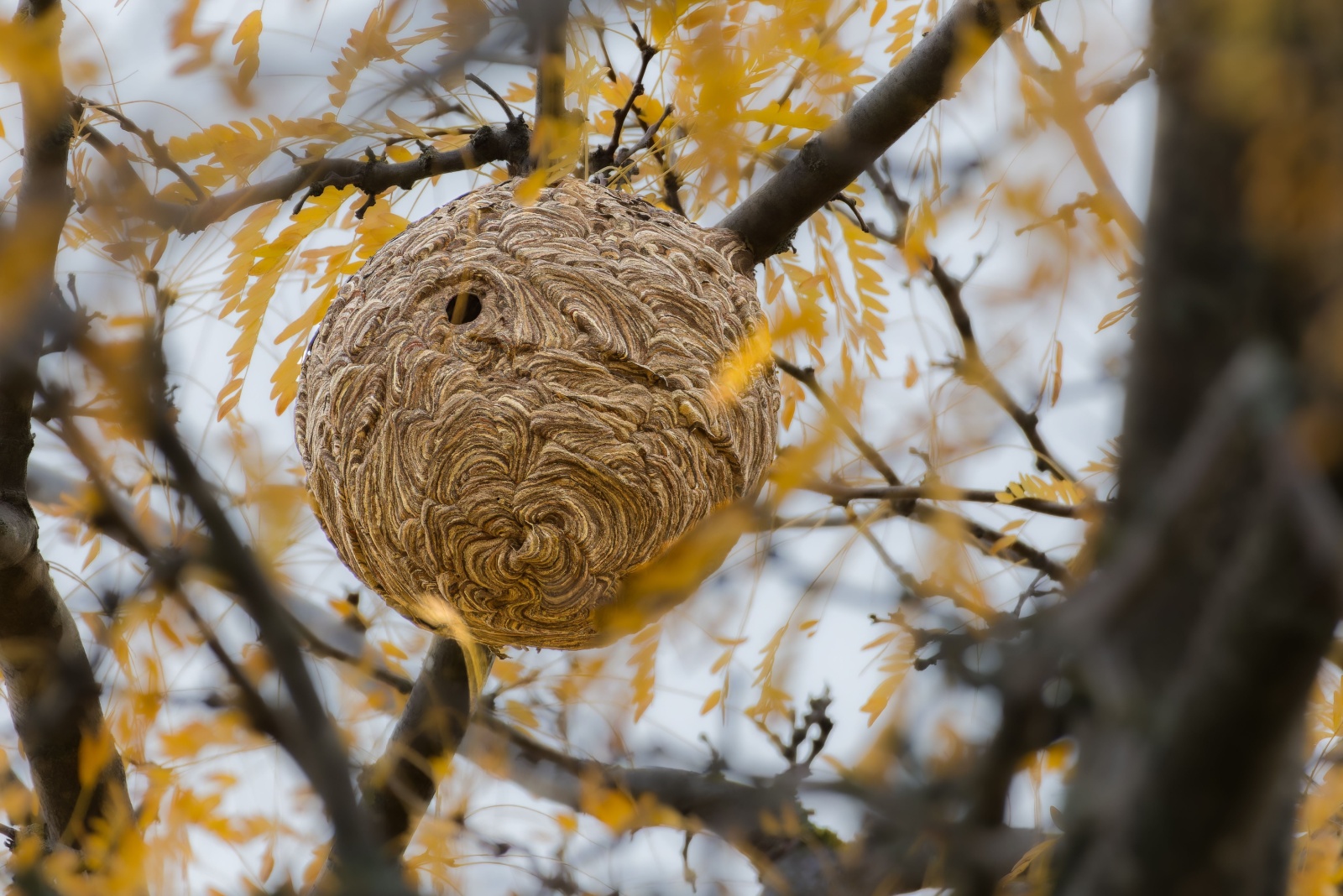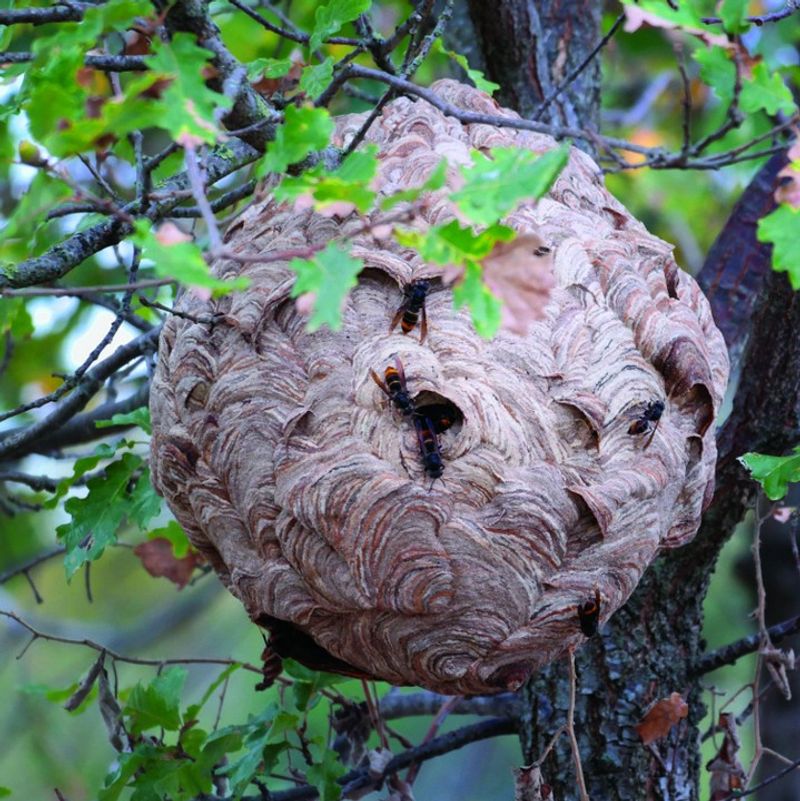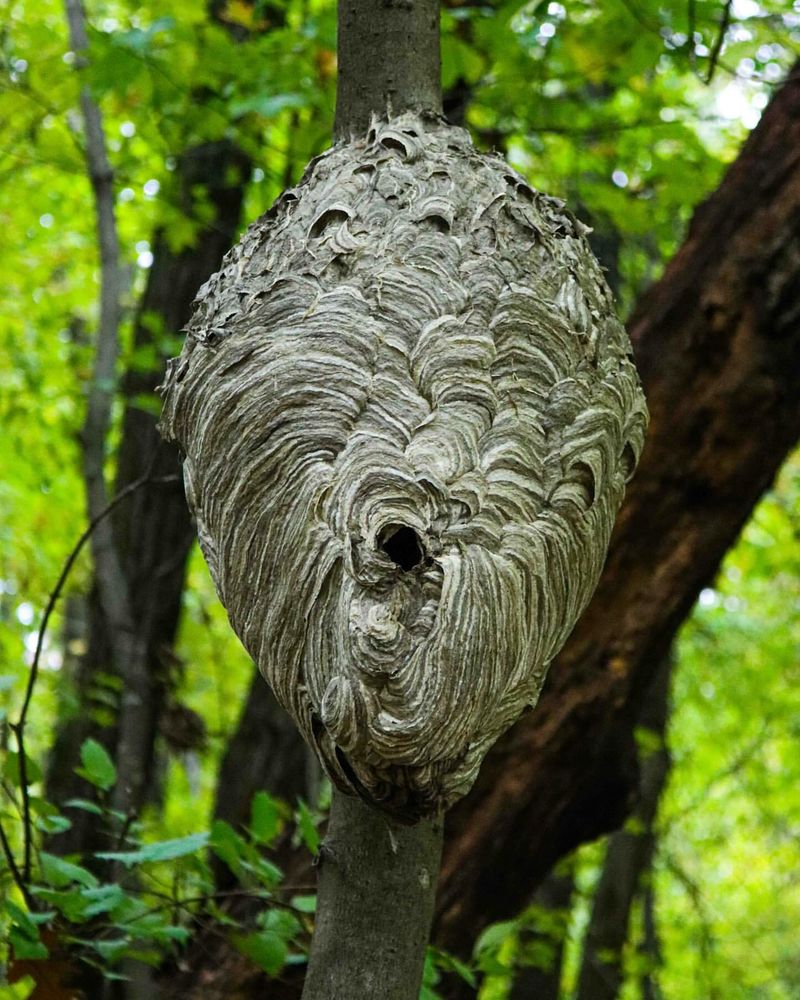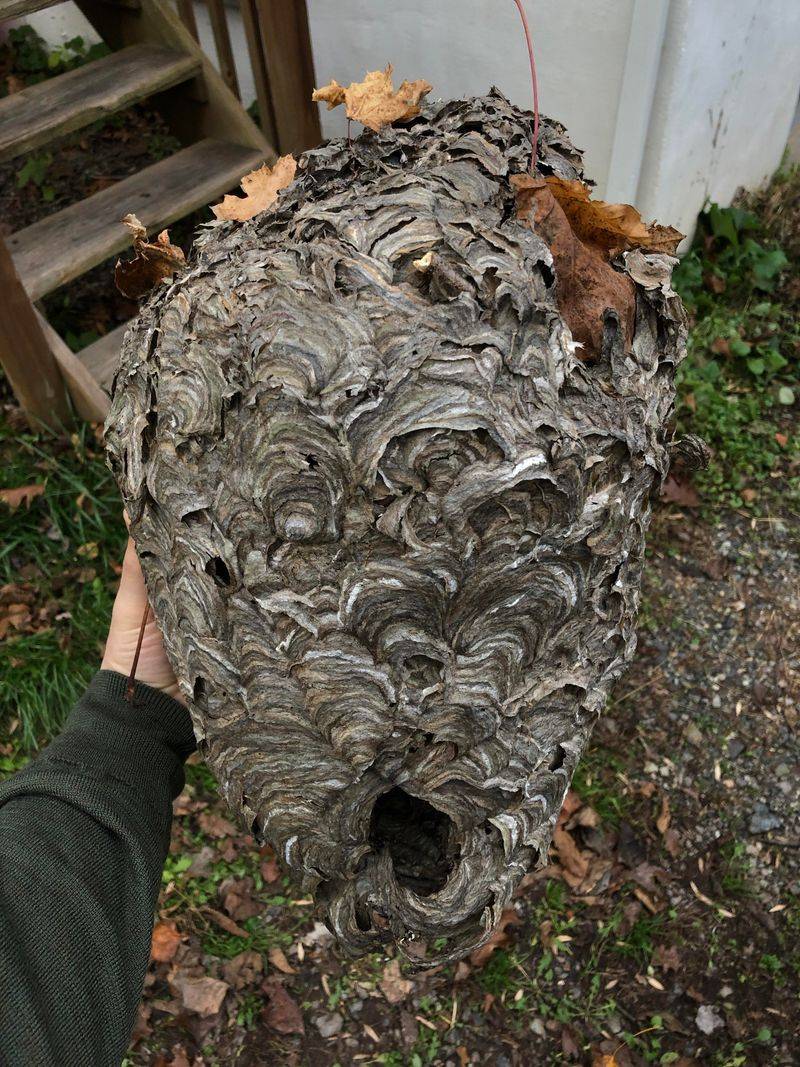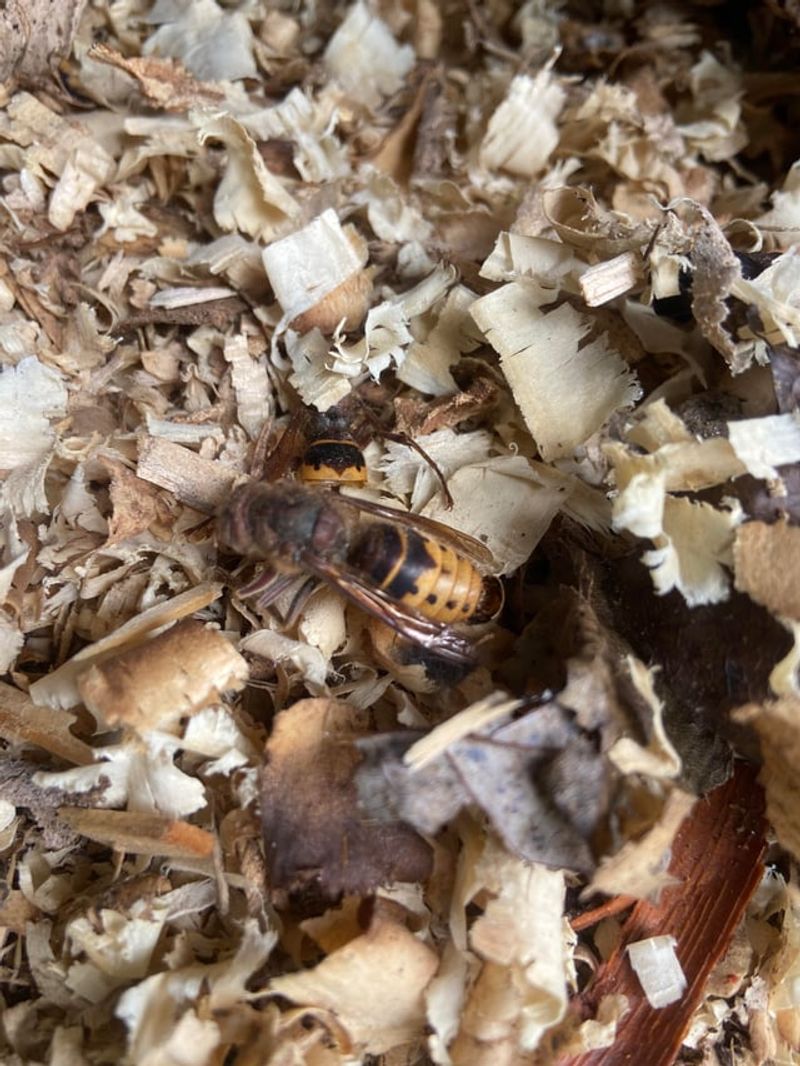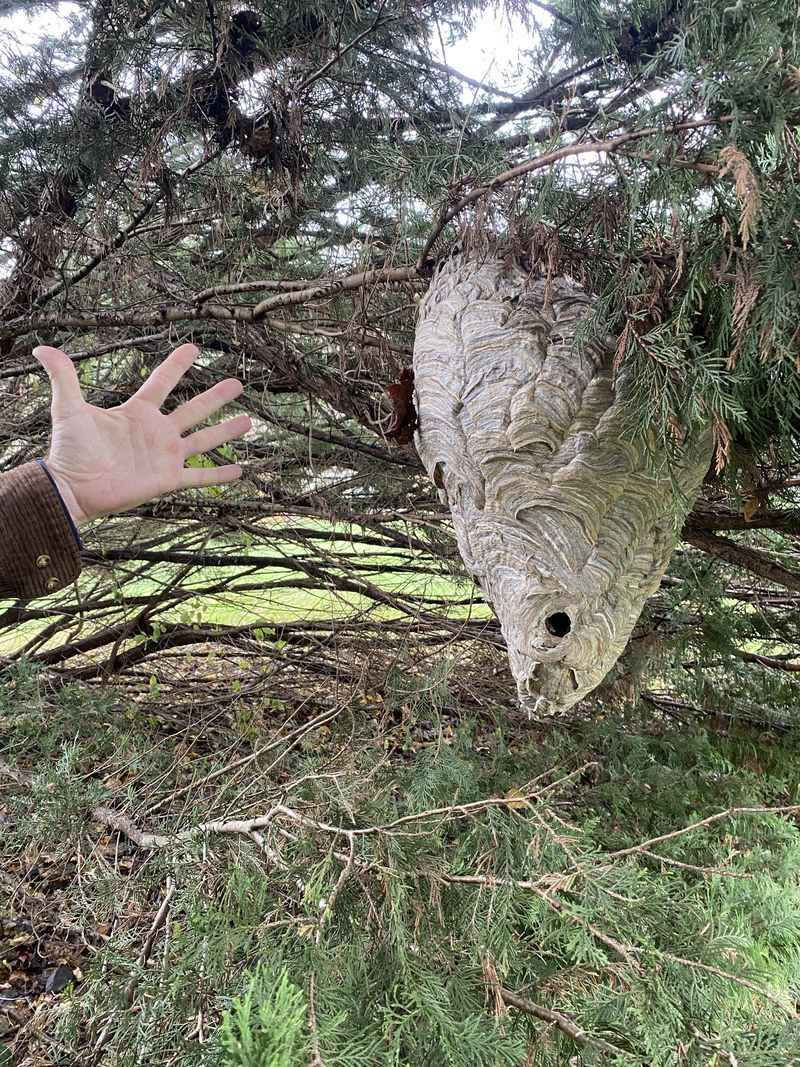Ever looked up at your tree and noticed what seems like a squirrel’s cozy home nestled in the branches? Before you assume it’s a harmless drey, you might want to take a closer look.
In Alabama, many homeowners mistake large hornet nests for squirrel nests, and the consequences of getting too close can be painful. Understanding the differences could save you from a very unpleasant surprise.
1. Size And Shape Give Away The Truth
Squirrel nests typically look messy and loose, built from twigs and leaves stacked together. Hornet nests, however, appear as smooth, papery spheres that can grow as large as a basketball.
In Alabama’s warm climate, hornets build their colonies quickly during spring and summer. The nest’s outer shell has a distinctive gray or tan color with visible layers.
If the structure looks too perfect or round, it’s likely not made by squirrels at all.
2. Location In The Tree Matters
Squirrels prefer building their dreys in the fork of branches, tucked close to the trunk for stability and protection. Hornets often hang their nests from outer branches where they have better access to flying in and out.
Alabama trees like oaks and pines are favorite spots for both creatures. Watch for nests dangling from thinner branches rather than wedged securely between thick limbs.
The hanging position is a major clue you’re dealing with stinging insects.
3. Activity Around The Nest Tells The Story
Squirrels come and go from their nests during daylight hours, usually in the morning and late afternoon. With hornets, you’ll notice constant buzzing activity with insects flying in and out throughout the day.
During Alabama’s hot summers, hornet colonies become especially active. Stand at a safe distance and observe for several minutes.
If you see steady traffic of flying insects, you’ve definitely found a hornet home, not a squirrel sanctuary.
4. The Texture Reveals Construction Secrets
Run your eyes over the structure carefully from a distance. Squirrel nests have a rough, uneven texture with visible sticks poking out in different directions.
Hornet nests feature a papery surface that looks almost manufactured, created from chewed wood fibers mixed with saliva. Alabama hornets are master builders, creating intricate layers that protect their colony.
The smooth, paper-like appearance is your biggest warning sign to stay away and call professionals.
5. Seasonal Timing Provides Important Clues
Squirrels use their nests year-round, especially during winter months for shelter and raising young. Hornet colonies follow a different pattern, with nests appearing in spring and growing throughout summer.
By late fall in Alabama, hornet nests become abandoned as the colony disperses. If you spot a suspicious nest during summer that wasn’t there in early spring, hornets likely built it.
The sudden appearance is a telltale sign of insect construction.
6. Sound Can Be Your Best Warning System
Approach cautiously and listen carefully before getting close to any suspicious nest. Squirrel homes remain silent except when the animals are present.
Hornet nests produce a distinct humming or buzzing sound, especially on warm Alabama afternoons when the colony is most active.
The noise comes from hundreds or thousands of insects moving inside and around the structure. If you hear buzzing, immediately back away and maintain a safe distance of at least twenty feet.
7. Entry Holes Show Different Patterns
Squirrel nests usually have one or two larger openings on the side, big enough for a squirrel to squeeze through comfortably. Hornet nests typically feature a single, small entrance hole at the bottom.
This opening allows hornets to defend their colony more easily against intruders. In Alabama, bald-faced hornets and European hornets both create this characteristic single-entry design.
The tiny doorway at the base is nature’s security system for these aggressive defenders.

